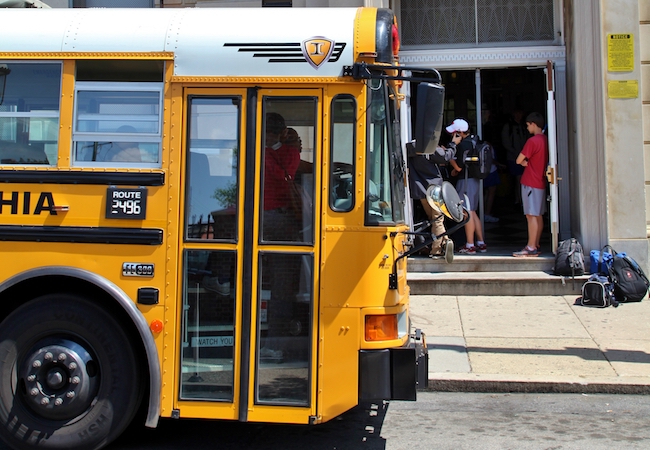Easing back into the classroom
February 4, 2021
Across the country, kids are getting ready to return to the classroom in person for the first time in almost a year.
The prospect can be daunting for students, parents, and educators. Some children will have come to really enjoy their online classrooms. Others, having heard contradictory advice on the safety of re-opening schools, will be worried about COVID.
Penn GSE’s Marsha Richardson, a clinical psychologist by training, offers these tips on how parents can help smooth their child’s transition from a cyber classroom back into a brick-and-mortar school.
Acknowledge the “new normal”
Even kids who have wanted to get back into their classroom for months will likely have some hesitancies now that the moment is here. You might share that feeling.
Acknowledge this up front. Talk about the new rules that will be in place designed to keep students and teachers safe, and how these rules change what the school experience will be like. Give your child space to vent — emotionally and perhaps behaviorally — about a lost sense of what was. Don’t be surprised if this change brings back up anger, sadness, and frustration about opportunities that were missed over the last year.
Face fear
Everyone in the school community is likely feeling stress. Parents are worried about their children’s safety. Teachers are worried about their health and wellbeing. Children of all ages and awareness levels are concerned and fretful about the idea of going back into buildings, and this anxiety can negatively impact their ability to learn as well as their social interactions.
As a parent, it’s important to acknowledge this stress in both yourself and your child. Allow space for your child to talk about their fears and concerns and validate those feelings. Be appropriately transparent about your own worries and model for your child how you manage these feelings. Arm your child (and you) with knowledge about safety protocols, behavioral expectations, and supports for the child in the school building.
Role play possible scenarios about what they might encounter once they enter the schools again. For example, you can practice with younger kids how to put on and keep on face masks, hand wash, social distance, etc. These at-home lessons can be fun and engaging and not daunting and filled with fear.
Have conversations with older children about the science behind keeping hands clean; put hand sanitizer and extra face masks in their book bag and discuss the possibility of encountering peers who may not be compliant with safety protocols and what that might look like. If a classmate refuses to wear a mask or tries to pull away the mask of other students, for example, tell your student to walk away, not engage with the student, and/or tell a teacher.
Know where to get help
It’s understandable if your child is anxious. Consider reaching out to your school counselor now to ask how they would be able to support your child if they struggle emotionally, either at school or at home.
You’ll feel better prepared knowing what resources are available if you need them in a few weeks. And tell your child who they can reach out to — a counselor, a favorite teacher, a coach — if they find the transition difficult.
Focus on sleep
There is a good chance your kid’s schedule has been a bit looser in the last year. Without a bus ride or a walk to school, they might have woken up later. As a result, maybe they stayed up later. There might have been more afternoon naps.
This can seem like a small thing, but sleep hygiene matters to our mood and ability to concentrate. Ease your child back into their old sleep routine over a week or two. Your child’s first early alarm in a year shouldn’t come on a day they have to be out the door.
Get excited
For all the reasons you and your child might be apprehensive, there are reasons to be excited. Your kids will get to see their friends, they’ll be able to join classroom discussions without worrying if they are still on mute, and they’ll be someplace different. Remind your kids of these positives.
What details have you heard from your child’s school, teacher, or school group? Tell your child as much as you can so they know what to expect.
If this were August, what fun things would you be doing to prepare for a new school year? Maybe buying new shoes or clothes? If you have the means, think about a back to school outfit for your child.
And if your kid has mostly worn sweats to their video classes, this would be a good time to see what else still fits!
Keep talking
Even if the first day back in school goes smoothly, expect there to be some bumps along the way. Some days will be tougher than others.
Listen to how your child describes their day. Are there things that particularly worry them? Do they bring up the same issues frequently? If so, explore this more.
Continue to intentionally check in on their mental state. If your child had specific fears before going back, about social distancing, learning, or anything else, ask about those from time to time.
Watch out for these telltale signs that your child may be feeling anxious about school:
- Increased defiance and irritability (particularly around school attendance)
- Sleep disturbance (too little or too much)
- Poor concentration
- Physical complaints (stomachache, nausea, dizziness, muscle tension, headaches) with no underlying medical condition
- Tearful, crying
- Diminishment of interest in things that they used to enjoy doing (sports, games, outside playtime
If you see these signs, talk to your child about them, and consider reaching out to your school counselor.


